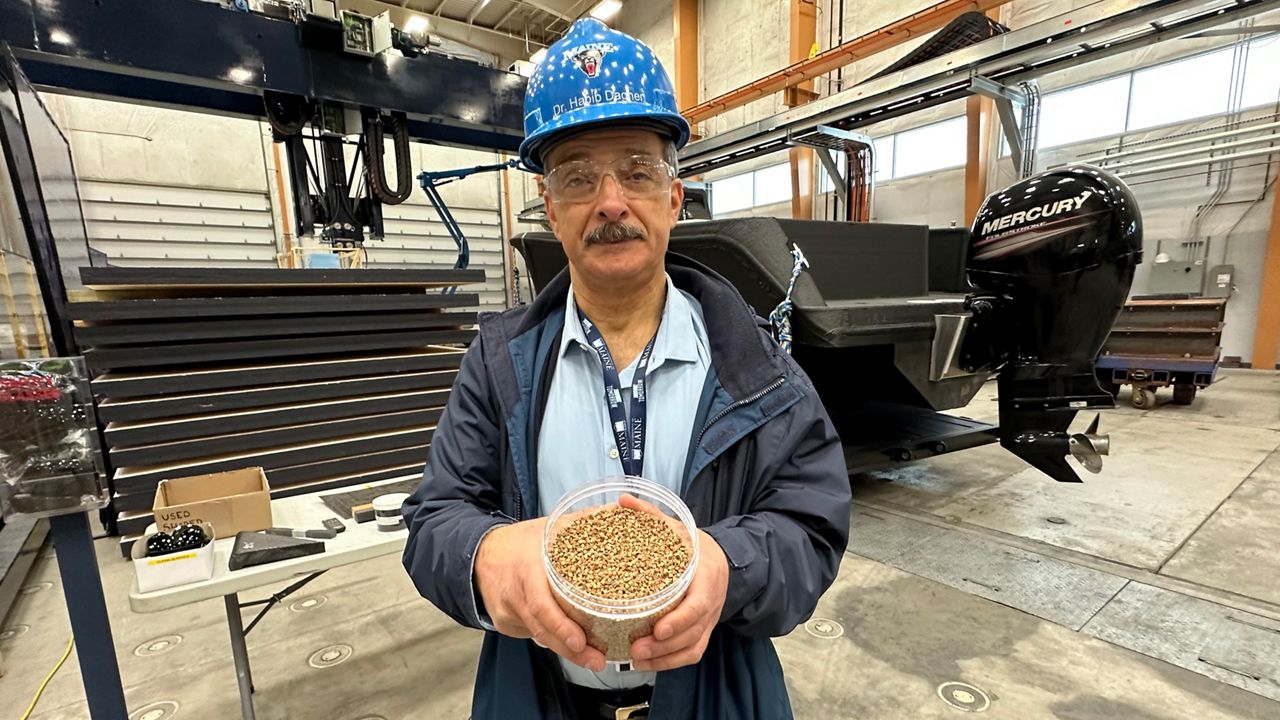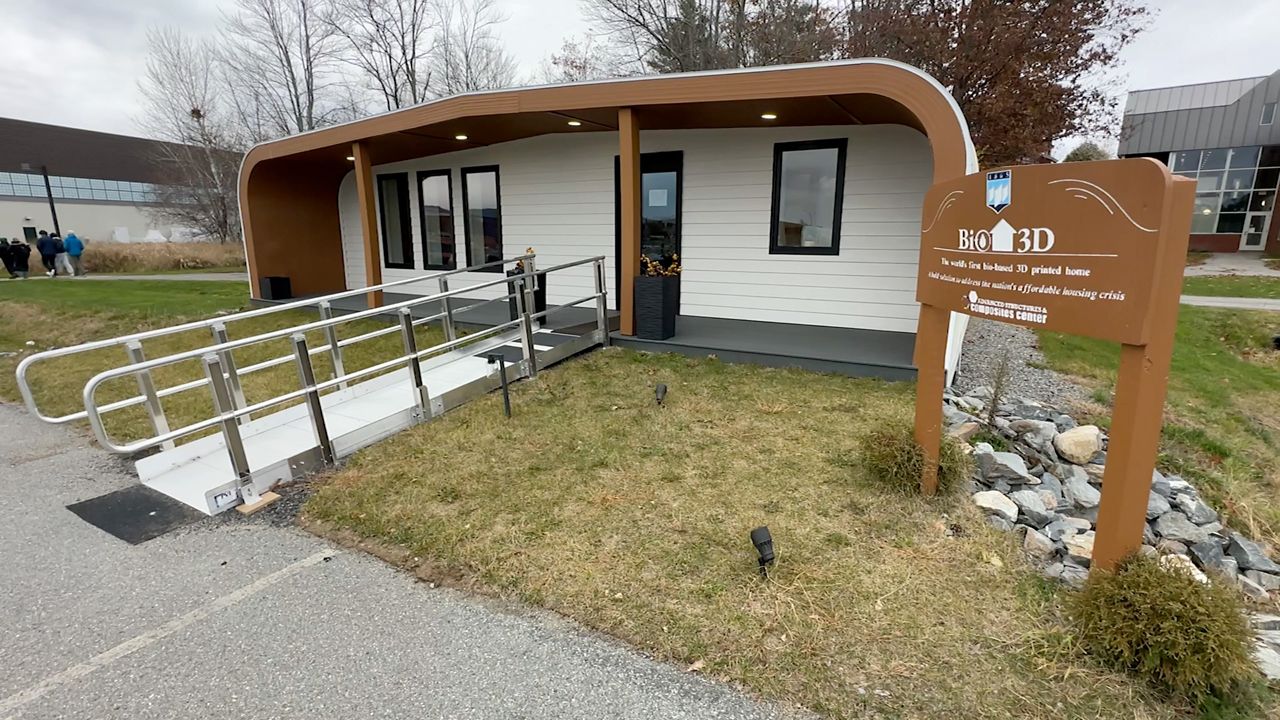Anyone who has used a home 3D printer to produce whistles, pencil holders, toys and other household objects knows the potential of a machine that can turn a computer file into a physical object.
But to really see what 3D printing can do, look no further than the house Habib Joseph Dagher and his team have built at the University of Maine at Orono and plan to reproduce many times to help tackle Maine’s housing crisis.
The school’s Advanced Structures and Composites Center has 3D printed an entire house – a 600-square-foot, one-bedroom home complete with a full bathroom and combination kitchen/living room area.
It’s been a year since the first experimental model was installed on the college’s campus, and today Dagher, the center’s director, can say with confidence that the home’s design is robust enough to handle a typical winter.
“The goal was really to test it in the Maine environment,” he said.
Dagher and the center are so confident in the technology that they have plans to mass produce it. The center has already raised $81.5 million to begin work on a new factory next summer, located next to the center’s existing building on the campus. The factory, Dagher said, will likely allow for the production of one full house within 48 hours.
The 3D homes are slated for a nine-lot subdivision of low-income, subsidized affordable housing in the Bangor area.
How it works
The technology for printing ink on paper has been around for decades. Home 3D printing works on the same principle, with a head delivering something, in this case melted plastic or resin, instead of ink, in rows in three dimensions.
Needless to say, the center’s 3D printer, while based on the same concept, is much more complex. The most notable difference is its size. The platform where the head prints objects is large enough for an adult to stand on with plenty of room to spare. It doesn’t use plastic, either. Instead, it melts a compound of wood fiber and bioresin to make the walls of the home it prints.
The compound is also the most obvious sign of the center’s philosophy of being sustainable, not just practical. The wood component, Dagher said, comes from scrap produced by the state’s timber industry, scrap that is considered waste material anyway. The center grinds the wood down into a powder the consistency of flour. Each of the 600-square-foot homes will require roughly 10 tons of wood. With an estimated 1 million tons of scrap wood being produced in Maine every year, there is more than enough available for the center’s work.
The resin the center blends with the wood can come from a number of sources, Dagher said, and could potentially come from recycled waste materials such as milk cartons.
“Our mission is to bring green energy and materials to society,” he said.
Dagher said the idea is to respond to supply chain issues that rob Maine of building materials by simply finding new materials to use within the state. That philosophy extends to other parts of the house the center can’t print, such as windows and doors. Those, he said, come from companies within the state as well.
“The idea is to try to minimize what we import,” he said.

Habib Joseph Dagher, director of the University of Maine at Orono's Advanced Structures and Composites Center, holds up a container full of pellets that are made from a 50/50 mixture of powdered wood and bioresin. An enormous 3D printer melts the pellets into a compound that is used to print the walls and roof of a one-bedroom home. (Spectrum News/Sean Murphy)
Housing project already in the works
The center is working in tandem with MaineHousing, the quasi-nonprofit that functions as Maine’s housing authority, on its first real-world test of the technology’s potential.
The plan, according to a center spokesperson, is to construct homes for a subdivision in the Bangor area, targeting low-income Mainers struggling to find a stable residence.
“The idea that we can create housing units in a fraction of the time with a fraction of the workforce — that is an efficiency that we’ve never experienced before,” Dan Brennan, director of MaineHousing, said when the center’s house was first unveiled in November 2022. “It’s going to stretch our precious state and federal resources exponentially, and most importantly, provide — quickly — for those most in need in our state.”
The ‘Factory of the Future’
Dagher said the center’s expansion plans will lead to mass production of the homes, but the new facility will do much more than that. He said the center will also be a research and development lab. Even as the factory produces homes, he said, the center will be working on ways to improve its process, producing smaller homes faster, and eventually constructing larger homes.
Right now, the center employs 400 people for various projects, including 3D printing of homes, but the expanded center will need more people, with more technical skills. Dagher described the center as akin to a “teaching hospital,” training new engineering students to work in the local factory, and to potentially work at other factories of this type that might be built elsewhere in the country.
“That’s the workforce of the future we’re preparing,” he said.
While much of the construction of the 3D-printed home is done with robots driven by AI software, Dagher insisted that, even if this technology takes off as predicted, it will not replace humans, and is not supposed to. Dagher sees it as a supplement to existing traditional construction industries.
“There’s not one technology that’s going to replace the market today,” he said.



